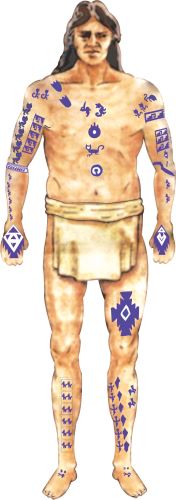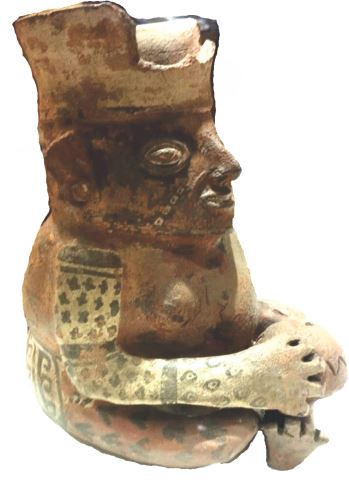At the beginning of 2025, an archaeological discovery left the international scientific community astounded. A study published in mid-January in the prestigious journal Proceedings of the National Academy of Sciences (PNAS) revealed a remarkable secret hidden in the mummies of the Chancay culture, a civilization that flourished between 1100 and 1400 AD on the central coast of Peru.
Thanks to advanced analysis techniques, researchers discovered that impressive tattoos remain intact on the skin of these mummies, displaying a resolution that surpasses even modern techniques.
This revelation not only confirms the artistic complexity of the Chancay culture but also raises new questions about the methods used to preserve these designs over the centuries.
Cutting-Edge Technology to Decipher the Past
The team of scientists, led by Judyta Bak (Jagiellonian University of Kraków, Poland), Thomas G. Kaye (Foundation for Scientific Advancement, Arizona, USA), Henry William Marcelo (Jose Faustino Sanchez Carrion National University, Peru), and Michael Pittman (Chinese University of Hong Kong), employed an innovative technique called Laser-Stimulated Fluorescence (LSF).
This method allows researchers to penetrate the surface layers of mummified skin and illuminate the tattoos from within, revealing details that had been hidden by time.
The results were astonishing: fine lines measuring just 0.1 to 0.2 mm thick, geometric figures, and zoomorphic representations with a precision comparable to —or even surpassing— the Chancay culture ceramics and textiles.
"The images obtained through LSF show exceptional artistic quality, with designs that rival the finest pre-Columbian artistic expressions," explained Michael Pittman in statements gathered by the German news agency DW.
The Secrets of an Ancient Technique
According to the scientists, more than 100 Chancay mummies were examined, and after determining that they date from between 1222 and 1282 AD, they indicated that ultraviolet light was used for the initial analysis, followed by a 405 nm laser scan and digital image processing to adjust colors and saturation.
Peruvian archaeologist Henry William Marcelo, director of the Arturo Ruiz Estrada Museum, who participated in the research, emphasized to Andina News Agency that tattoos were one of the most sophisticated artistic expressions of the Chancay culture.
"Their level of detail surpasses that of other art forms, such as ceramics and textiles," he stated.
Marcelo suggested that the study suggests these tattoos may have had a social or ritual significance, possibly reserved for individuals of high status.
In an interview with Andina News Agency, he revealed that the research identified the materials used to create the tattoos: cactus spines or sharpened bones that likely served as needles.
The Mystery of Lord of Chancay
One of the most intriguing findings was a mummy believed to belong to an elite figure —possibly a healer or shaman— who had tattoos not only on his limbs but also on his chest.
Among the designs were geometric figures and sacred symbols, including representations of the Sun, Pachamama, a feline, a fox, and Vichama, the god of life in the Andean worldview.

These patterns, characterized by meticulously aligned triangles and diamonds, suggest a deep understanding of symmetry and art.
"The mathematical precision in these designs is impressive. Despite more than a thousand years having passed, the pigmentation of the tattoos remains extraordinarily well-preserved," Marcelo noted.
A Glimpse into the Future of Research
The Peruvian researcher affirmed that this discovery not only expands our knowledge of ancient tattooing techniques in pre-Columbian Peru but also marks a milestone in archaeology.
He emphasized that the Jose Faustino Sanchez Carrion National University has established a long-term collaboration with Kraków University, involving a six-year project that will include tomographic studies in Peru and further in-depth analyses in Polish laboratories.
Although the use of tattoos in Andean civilizations was already known —such as in the case of the Dama de Cao (1200 BC)— this study confirms that the Chancay culture developed tattooing art with remarkable precision.
"The Chancay culture not only mastered the art of tattooing but also advanced medicine. Skulls have been found with surgical trepanations that were reconstructed with metal inlays, suggesting an exceptional level of medical and technological expertise," Marcelo highlighted.
As research progresses, scientists hope to uncover more details about the symbolism and function of these tattoos within Chancay society.
For now, what is certain is that these designs have withstood the test of time, revealing a previously unknown facet of one of the most enigmatic cultures of ancient Peru.

(END) MAO/JMP/MVB
Published: 2/23/2025